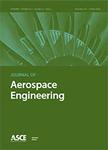版权所有:内蒙古大学图书馆 技术提供:维普资讯• 智图
内蒙古自治区呼和浩特市赛罕区大学西街235号 邮编: 010021

作者机构:Stanford Univ Dept Civil & Environm Engn 473 Via Ortega Stanford CA 94305 USA Natl Taiwan Univ Dept Civil Engn 1Sect 4Roosevelt Rd Taipei 106 Taiwan
出 版 物:《JOURNAL OF AEROSPACE ENGINEERING》 (航天工程杂志)
年 卷 期:2019年第32卷第2期
页 面:4018149.1-4018149.10页
核心收录:
学科分类:08[工学] 0813[工学-建筑学] 0814[工学-土木工程] 0825[工学-航空宇航科学与技术]
基 金:National Science Foundation-Network for Earthquake Engineering Simulation Research (NSF-NEESR) Charles H. Leavell Graduate Student Fellowship Div Of Civil, Mechanical, & Manufact Inn Directorate For Engineering Funding Source: National Science Foundation
主 题:Simple harmonic motion time series analysis Not Available structural damage detection maximum likelihood Damage detection SHAKING TABLE American Society of Civil Engineers (ASCE) inspection methods distributed parameter damage assessment normal operation
摘 要:The high structural deficient rate poses serious risks to the operation of many bridges and buildings. To prevent critical damage and structural collapse, a quick structural health diagnosis tool is needed during normal operation or immediately after extreme events. In structural health monitoring (SHM), many existing methods will have limited usefulness in the quick damage identification process because (1) the damage event needs to be identified quickly, and (2) postdamage information is usually unavailable. To address these drawbacks, we propose a new damage detection and localization approach based on stochastic time series analysis. Specifically, damage sensitive features, which are extracted from vibration signals, follow different distributions before and after a damage event. Hence, we use optimal change-point detection theory to find the time of damage occurrence. Because existing change-point detectors require the postdamage feature distribution, which is unavailable in SHM, we propose a maximum likelihood method for learning the distribution parameters from the time-series data. The proposed damage detection using estimated parameters achieves optimal performance. Also, we utilize the detection results to find damage location without any further computation. Validation results show highly accurate damage identification in American Society of Civil Engineers benchmark structures and two shake table experiments.